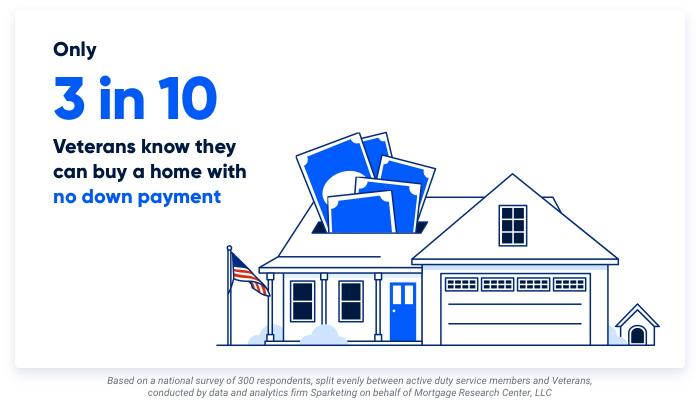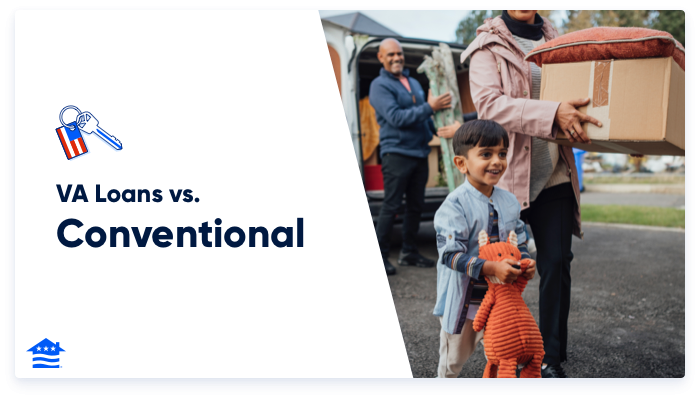Tiny homes have a lot of appeal, but do they meet all the minimum property requirements? Read on to learn more about VA loans and tiny homes.
Tiny homes are becoming increasingly popular as they’re more affordable than traditional homes, they’re eco-friendly and they can be placed almost anywhere. But can you purchase a tiny home with a VA loan?
The answer is maybe.
While there are no rules specifically excluding tiny homes from qualifying for a VA loan, the home must meet the VA’s minimum property requirements and pass a VA appraisal.
Here’s a closer look at the VA loan tiny home requirements:
The VA Appraisal for Tiny Homes
One of the first hurdles you’ll need to overcome is the VA appraisal. Before a lender will approve your loan request, they need to have an appraiser confirm the property’s value and evaluate its condition.
For traditional homes, it's fairly straightforward to find comparable sales. However, when it comes to tiny homes, this can be more difficult. Appraisers will likely need to take additional time and effort to locate comparable sales and determine an appropriate value for the home.
Tiny Homes and VA Minimum Property Requirements
The VA has minimum property requirements (MPRs) that all homes financed through a VA loan must meet. There are some common characteristics of tiny homes that might make them ineligible for VA financing.
Tiny Homes Foundation
The VA’s MPRs state the home must be built on a permanent foundation in order to be eligible for a VA loan. This means a tiny home on wheels will not meet the requirements and cannot be purchased using a VA loan.
However, if the tiny home is built on a permanent foundation, it may be eligible. The foundation must meet local building code requirements and must be approved by the VA. In addition, the home must also be attached to utilities such as water, sewer, and electricity.
Tiny Home Square Footage Requirements
The VA handbook states that homes must have an area of no less than 400 square feet. While tiny homes are generally defined as a home that is less than 600 square feet, the average size of tiny homes for sale in the U.S. is just 225 square feet.
Tiny Homes Living Space Requirements
The size of the tiny home could also pose a problem for the sufficient living space requirements. The VA states each home must have sufficient space for: living, sleeping, cooking and dining, and sanitary facilities. Your appraiser may also consider the marketability of the home, which could further impact your ability to meet the minimum appraisal standards.
Tiny Homes Land Requirements
The VA will not guarantee a loan for a tiny home on rented land, meaning you’ll have to be the owner of the lot. You can purchase the land using conventional financing, or you could use a VA land loan and then immediately begin construction on the home.
VA Construction Loan for Tiny Home
The VA allows Veterans and service members to purchase land and begin building a home immediately with a VA construction loan. However, it may be difficult to find a lender willing to do this type of loan. A more common approach is to use a traditional construction loan and then refinance into a VA loan after the home is built.
Are Tiny Homes a Good Idea?
Since it may be difficult to get a VA loan for a tiny home, you might be wondering whether it’s worth the time and effort. Here are some important pros and cons to consider:
Pro: Tiny Homes Are Less Expensive
Many tiny homes fall into a price range of around $23,000, which is far less than the cost of a traditional single-family home.
Con: You May Have Trouble With Financing
Not only is it difficult to get a VA loan for a tiny home, you may have trouble securing mortgage financing in general. Many of the same challenges for a VA loan apply to other mortgage types.
Pro: You Could Significantly Reduce Your Long-Term Expenses
Living in a tiny home means saving a significant amount of money on electricity, water and other utility bills. Without as much interior space, you’ll also spend less on furnishings, décor, household items and more.
Con: You Still Have to Pay for the Land
Tiny homes need to sit on land, which means you’ll need to own the property the home will be on. This is often an overlooked expense when considering a tiny home. If you buy land that isn’t zoned to build a tiny house or doesn’t have a septic system in place, you may have additional problems.
Getting a VA loan for a tiny home may be more difficult than a single-family home, but it is possible. Reach out to a VA lender to see if you are VA loan eligible for a tiny home.
Answer a few questions below to speak with a specialist about what your military service has earned you.
Related Posts
-
 VA Loan Down Payment RequirementsVA loans have no downpayment requirements as long as the Veteran has full entitlement, but only 3-in-10 Veterans know they can buy a home loan with zero down payment. Here’s what Veterans need to know about VA loan down payment requirements.
VA Loan Down Payment RequirementsVA loans have no downpayment requirements as long as the Veteran has full entitlement, but only 3-in-10 Veterans know they can buy a home loan with zero down payment. Here’s what Veterans need to know about VA loan down payment requirements. -
 VA Loan vs Conventional Loan: A Complete ComparisonHere we compare the primary differences between VA and conventional loans to show you when each option may be the best.
VA Loan vs Conventional Loan: A Complete ComparisonHere we compare the primary differences between VA and conventional loans to show you when each option may be the best.


